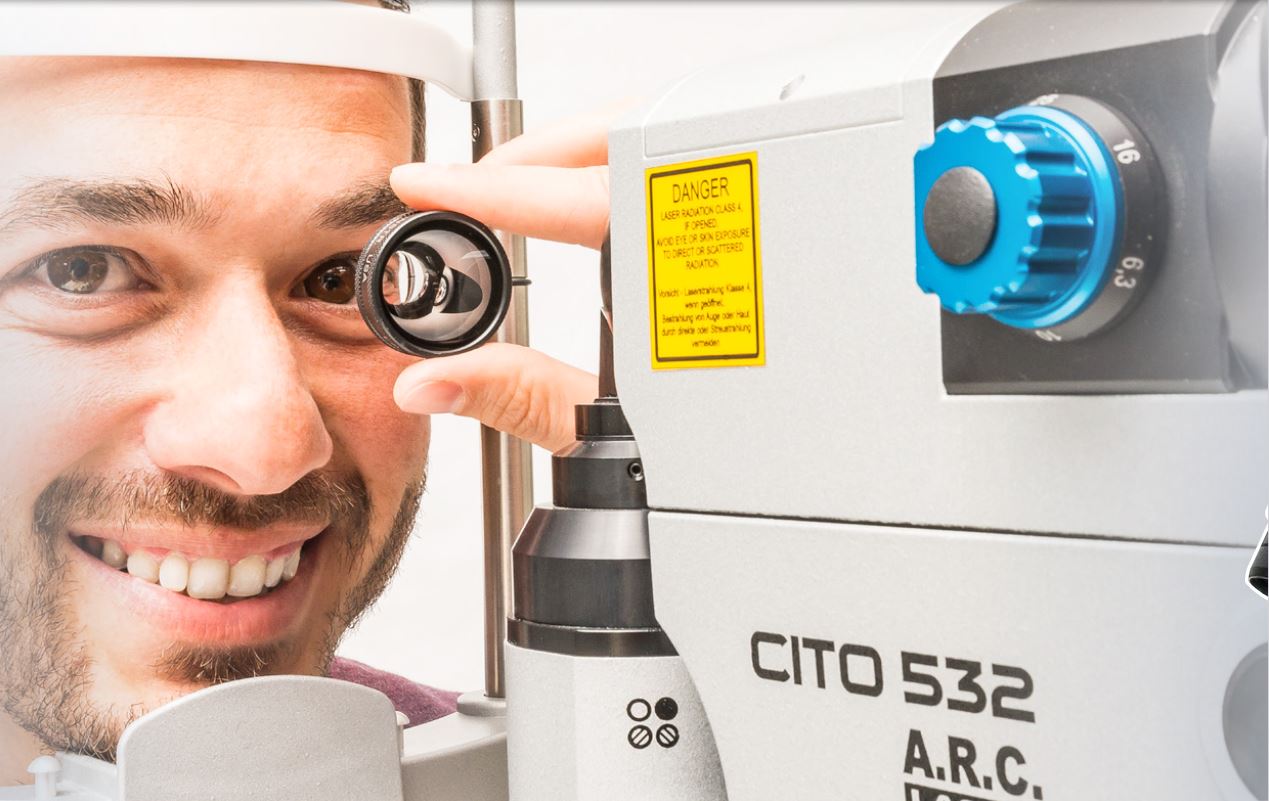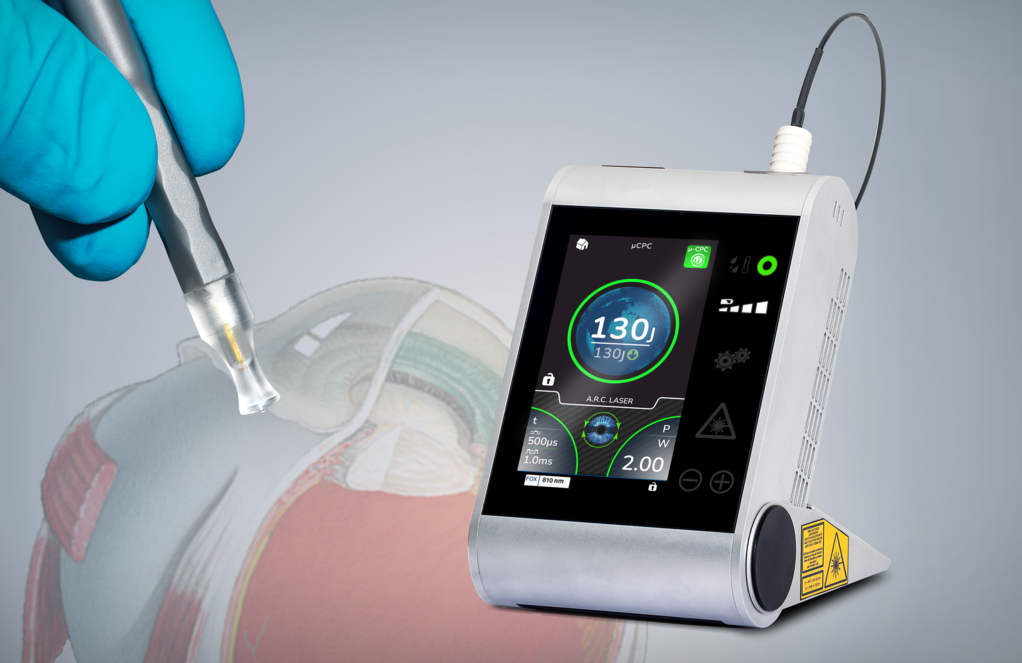Selective laser trabeculoplasty
SLT with CITO
As an alternative to intraocular pressure reduction by medication, it is recommended to use the CITO to treat SLT. This treatment of open angle glaucoma is almost painless and is carried out by your ophthalmologist via the laser-coupled slit lamp.
SLT is a method that achieves significant pressure reduction in a very gentle manner. It is comparable to medicinal therapy, but it is much more cost-effective, faster and more patient-friendly.
The advantages at a glance:
- First-Line-Therapy in open-angle Glaucoma
www.fdanews.com
www.thelancet.com
- No damage to the trabecular meshwork
- Low side effects that occur very rarely
- Globally acknowledged treatment for open angle glaucoma, also known as first-line therapy
µCPC
FOX 810 and FOX IV 810 for ciliary body treatment by microsecond pulses closes the gap between SLT & traditional CPC
During outpatient treatment, only a special designed laser probe is placed on the surface of the eye, an invasive opening of the eye is not necessary. The laser energy is introduced into the eye, more precisely the ciliary body, by a slow movement of the μCPC probe along the two hemispheres. This reduces the typical side effects of traditional cyclophotocoagulation to a minimum. Thereby a substantially earlier use of the diode laser is possible. Ideal in patients who do not respond to regular medication, desire to reduce medication or who have not experienced sufficient pressure reduction after SLT treatment.
CPC
FOX 810 for traditional cyclophotocoagulation
In more serious cases, we offer the FOX 810 diode laser for cyclophotocoagulation (CPC). This non-invasive treatment is very effective, since by means of selective coagulation the ciliary body partially is damaged and thus the production of the aqueous fluid can be reduced. This treatment is done with the appropriate Cyclo Probe predominantly in open angle glaucoma with a very high pressure.
Iridotomy
Q-Las: THE Nd:YAG laser for your practice
In the case of angle-closure glaucoma, a serious but rather rare disease, we offer a suitable laser for this treatment with the Nd:YAG laser Q-LAS. In this case, a hole is lasered into the iris to compensate the pressure differences between the anterior and posterior chamber and thus the flow of fluid to the front of the eye is restored.


